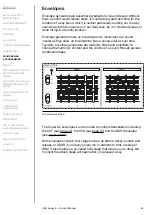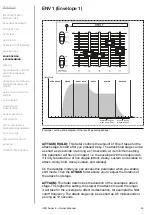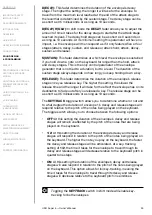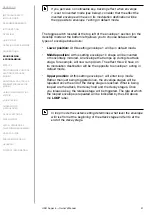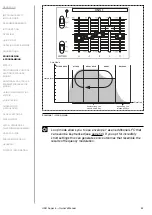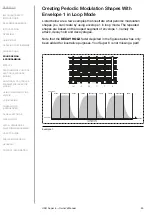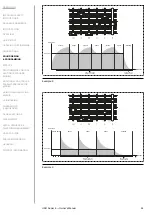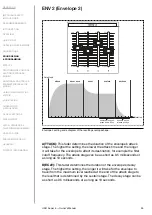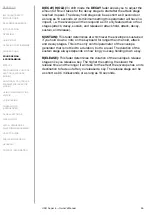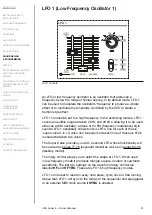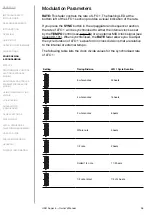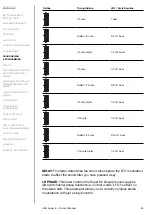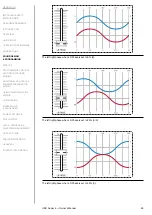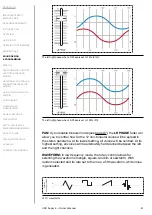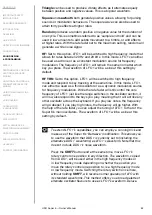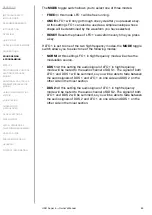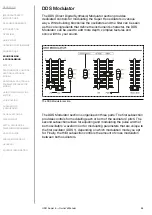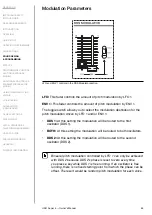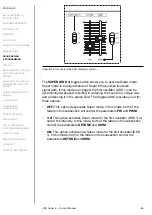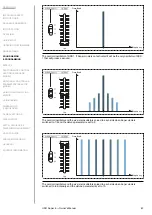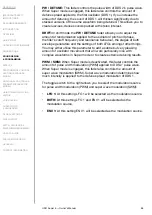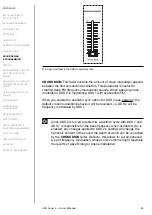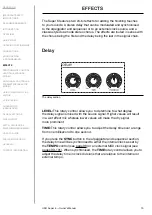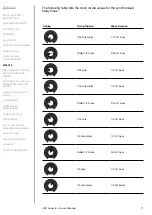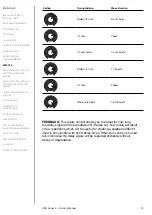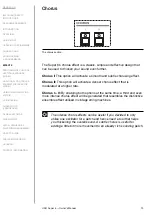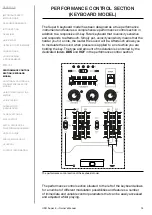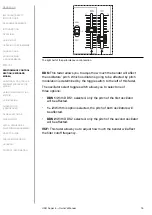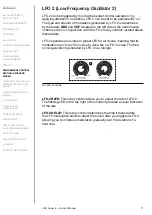
UDO Super 6 — Owner’s Manual
62
Triangle can be used to produce vibrato effects as it alternates equally
between positive and negative values. This is a bipolar waveform.
Square
and
sawtooth
both generate positive values, allowing for pulsing
sounds or modulation behaviours. The square wave can also be used to
attain trill type effects at higher rates.
Random
produces a random positive or negative value for the duration of
one cycle. This is sometimes referred to as ‘sample and hold’ and can be
used in low amounts to add subtle movement to a timbre, or wild effects
at higher rates. With the rate fader set to the maximum setting, random will
generate a white noise signal.
HF:
Set to this option, LFO 1 will be switched to high frequency mode that
allows for rates between 20 Hz and 20 kHz. In this mode, LFO 1 can either
be used as a drone or as a constant modulation source for frequency
modulation. The frequency of LFO 1 will remain the same no matter which
key you press. The waveform of LFO 1 will be a sine at this setting by
default.
HF TRK:
Set to this option, LFO 1 will be switched to high frequency
mode and respond to key tracking at the same time. In this mode, LFO 1
can either be used as a third oscillator or as a dynamic modulation source
for frequency modulation. While the rate fader will still control the core
frequency of LFO 1 just like the range switches in the oscillator section, it
will now also respond to the keys you play, meaning that it will act like any
other oscillator across the keyboard: If you play low notes, the frequency
will go deeper; if you play high notes, the frequency will go higher. With
the help of the rate fader you can adjust the tuning of LFO 1 to that of the
Super 6’s main oscillators. The waveform of LFO 1 will be a sine at this
setting by default.
To extend LFO 1’s capabilities, you can employ a cunning trick and
make use of the Super 6’s ‘Battwave’ modification. This allows you
to use the waveform that DDS 1 is currently set to (including the
alternative DDS 1 waveforms) as LFO 1’s waveform. Note that this
doesn’t include DDS 1’s noise waveform.
Press the SHIFT button and at the same time, move LFO 1’s
rotary control one position in any direction. The waveform, copied
from DDS 1, will be used either in the high frequency modes or
in low frequency mode depending on whether the position you
move the rotary control one position to, is a high frequency mode
or low frequency mode. Switching the rotary switch once more,
without holding SHIFT, will resume normal operation of LFO with
its standard waveforms. This method offers you a broad palette of
alternate oscillator flavours to use as LFO 1’s waveform. Deluxe.
Summary of Contents for SUPER 6
Page 142: ......

